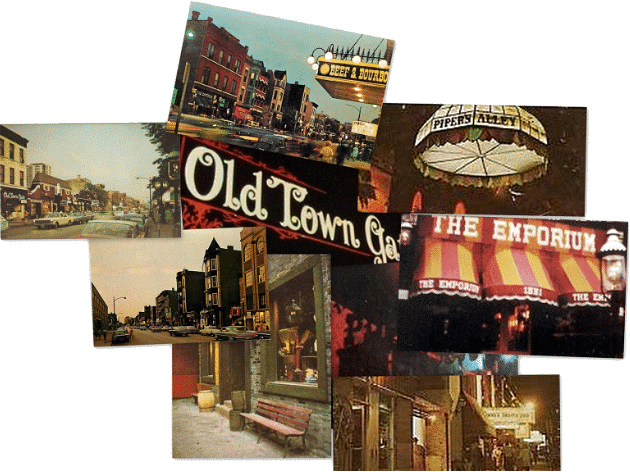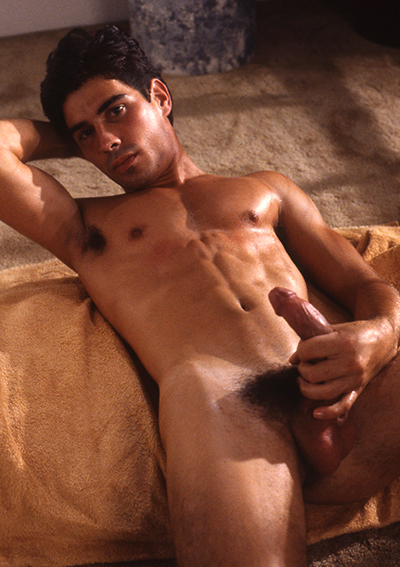When the Bijou Theater opened its doors in the Old Town neighborhood of Chicago 46 years ago, let's just say that area was pretty much the Haight-Asbury of Chicago. Think hippies. Head shops. Art house cinemas. Think, according to one nostalgic online poster, a place where one might (and it did happen) actually see a woman walking a goat down the street.
 Now, some claim that by 1970s its glory hippie days were over, but the gay places, including the new Bijou Theater and a bar called Glory Hole (self-explanatory) were glorying (literally) in the newly liberated gay sexual revolution (think lines of guys waiting to get in). Old Town, always raw and raunchy and funky, was becoming the gayborhood.
Now, some claim that by 1970s its glory hippie days were over, but the gay places, including the new Bijou Theater and a bar called Glory Hole (self-explanatory) were glorying (literally) in the newly liberated gay sexual revolution (think lines of guys waiting to get in). Old Town, always raw and raunchy and funky, was becoming the gayborhood.
This new gayborhood was still the home of what are now legendary Old Town places.
This article pretty much says it all:
Chances R (1528 N.; occupied today by O`Brien`s Restaurant). The old saloon and hamburger joint was said to have started the Wells Street revival when it opened back in the early `60s. Customers were encouraged to toss their peanut shells on the floor. The restaurant`s name reflected the uncertainty of the location. ``Chances are we could go broke,`` the owners reportedly said among themselves.
Ripley`s Believe It or Not Museum (1500 N.). Ripley, which opened in 1968, was part of a chain of international Ripley`s museums. The Chicago branch contained 13 galleries, including the circus room with its various freaks and mutations as well as replicas of Cleopatra`s barge, of a man who lived to be 160 years old and of a mummified monk. The museum closed in 1987 and auctioned off its exhibits.
London Royal Wax Museum (1419 N.). Another popular stop along Wells, the museum included lifelike figures of Chicagoans Ernie Banks, Hugh Hefner and Al Capone. The dungeon featured replicas of Dracula, the Wolf Man and Frankenstein while the fantasy room contained Pinocchio, Cinderella, Rip Van Winkle and Alice in Wonderland.
The Earl of Old Town (1615 N.). The fabled club that came to epitomize the Chicago folk scene and honed such home-grown talent as Steve Goodman, John Prine and Bonnie Koloc opened in 1962. Owner Earl Pionke didn`t introduce music, however, until 1966.
In 1951, free spirit Slim Brundage established the College of Complexes at 1651 N. Wells St. Inspired by the legendary Dill Pickle Club of the `20s, the College of Complexes was part coffeehouse, part lecture hall and part speakeasy.

Now more a playground for clean-cut tourists and inhabitants of expensive dwellings around the area, Old Town succumbed to gentrification. Some might claim it came back after a decline in the eighties, but its material prosperity lacks that unique funky edge that made it what it is.















 Are brick-and-mortar bookstores, or gasp, even books, now a thing of the past, like rotary phones, local savings and loans, and milkmen?
Are brick-and-mortar bookstores, or gasp, even books, now a thing of the past, like rotary phones, local savings and loans, and milkmen? Social media is fast and convenient and works wonders to connect others with shared values in crisis situations, but what bothers me about it is that the word element gets lost: the word as both language and also something that a live person embodies in an “I-Thou” dialogue. Kind of like Judaism's idea of the Torah as the eternal voice of God or the Christian theology of the Word made flesh. Something that needs more than a tweet or a non-verbal instagram to express.
Social media is fast and convenient and works wonders to connect others with shared values in crisis situations, but what bothers me about it is that the word element gets lost: the word as both language and also something that a live person embodies in an “I-Thou” dialogue. Kind of like Judaism's idea of the Torah as the eternal voice of God or the Christian theology of the Word made flesh. Something that needs more than a tweet or a non-verbal instagram to express.



 In an interview with Stallion magazine, known for his sexually aggressive but also unforced, natural screen presence, seems rather lowkey, both veering between a quiet confidence in himself, but also showing a somewhat self-deprecating attitude. Definitely not the “divo” attitude of so many celebrities: “Everyone wants to look at me, I am the
In an interview with Stallion magazine, known for his sexually aggressive but also unforced, natural screen presence, seems rather lowkey, both veering between a quiet confidence in himself, but also showing a somewhat self-deprecating attitude. Definitely not the “divo” attitude of so many celebrities: “Everyone wants to look at me, I am the  Join our Email List
Join our Email List Like Us on Facebook
Like Us on Facebook Instagram
Instagram Youtube
Youtube Follow Us on Twitter
Follow Us on Twitter Follow us on Pinterest
Follow us on Pinterest